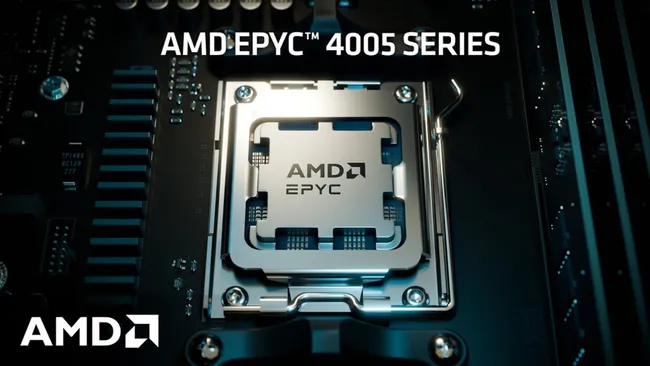AMD is drawing attention with its new generation of low-cost EPYC 4005 series, which has surpassed its first high-end server processor introduced eight years ago. The EPYC 4585PX model of the series delivered almost three times the performance of the EPYC 7601, which was released in 2017, in comprehensive tests.
The EPYC 4005 series delivered three times the performance of the EPYC 7601
Moreover, this difference was achieved with fewer memory channels and lower power consumption. This result shows how rapidly the development in enterprise server hardware is happening. The EPYC 4585PX belongs to AMD’s more entry-level and energy-efficient Grado platform, not the high-end EPYC 9005 family.

In the tests conducted by Phoronix, comparisons were made with more than 200 different workloads on the Ubuntu 25.04 operating system. A wide range of processing scenarios were tested, including server tasks, high-performance computing (HPC), scripting, media encoding and compilation.
According to the results, the EPYC 4585PX delivered an average of 2.69 times more performance than the old EPYC 7601 model. The difference was even wider in the performance per watt comparison; the new processor was 2.85 times more efficient.
This efficiency is attributed to the optimization of the processor at the architectural level and the more advanced manufacturing process. All these values were achieved with lower memory capacity and less energy. The EPYC 4585PX system was tested with only two DDR5 DIMMs, while the EPYC 7601 was tested with eight memory channels. Despite this, the new model outperformed the old model in most workloads.
The advantage of the new platform was also revealed when comparing the overall power consumption of the system. The wall consumption of the entire system was measured as 225W for the EPYC 4585PX and 238W for the EPYC 7601. However, the difference in consumption values at the processor level is less pronounced: EPYC 4585PX consumed an average of 153W, while EPYC 7601 used an average of 141W. The maximum power draw was recorded as 204W and 195W, respectively.
This data shows that lower standby power draw can be more important than full load, especially for small businesses or home office (SOHO) infrastructures that require low power consumption. The EPYC 4005 series becomes a suitable alternative for entry-level infrastructure projects by being able to outperform older systems with less memory and less energy. It provides significant advantages especially in scenarios where thermal and energy constraints are critical, such as NAS systems.
These new processors offered by AMD with Grado architecture surpass the previous generation flagship processors not only in performance but also in cost and energy efficiency. Comparisons with the EPYC 9005 family may reveal higher performance levels in the coming period. However, according to the current picture, high-priced solutions are no longer the only way to achieve high performance. The EPYC 4005 series offers a new balance point in server infrastructures.













